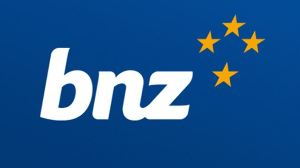However, the BNZ and Infometrics are forecasting an even higher OCR at 6% - a level only seen for five-and-a-half years in the past 25 years.
ANZ’s forecast is more aggressive on the house price outlook than the RBNZ and, as a result, it expects one more OCR hike.
The lift is based on its outlook for annual house price inflation to come in at about 5% over 2024, then moderate to about 3% in 2025. If upside housing pressures result in upside CPI inflation pressures, the RBNZ is likely to respond with hikes, stopping the housing upswing in its tracks, Sharon Zollner, ANZ’s chief economist says.
“While this economic cycle has been rapid, if the economy fails to slow sufficiently to cool core inflation, the RBNZ may be forced to respond with a higher OCR than anyone is forecasting. And this would be expected to put the brakes on the housing market pronto.”
She says if ANZ’s outlook materialises, it risks pump-priming economic activity in several ways.
- New homeowners buy durable goods, such as washing machines, couches, beds and fridges which supports retailers and manufacturers, enabling them to continue to raise prices.
- Higher house prices make the maths easier for residential developers since they can restore/expand their margins. This raises demand for building materials and labour, increasing construction costs in the CPI and causing broader pricing pressures as wages earned in construction are spent elsewhere.
However, the lags from house prices to inflation are uncertain and vary through time. “There remains a trade-off for the RBNZ and it’s no easy choice,” Zollner says.
“React too early and risk hiking into an already cooling economy, needlessly sacrificing jobs. React too late and risk the housing market spiralling away further, embedding high inflation expectations and requiring even more hikes to drain inflation from the system. And all this is before looking at all the other things going on in the economy.”
Either way
Westpac says there is a 50/50 chance of another OCR hike in November on the back of recent economic data.
Westpac chief economist Kelly Eckhold says since May, Westpac economists have had the view that the RBNZ will need to tighten policy further to ensure a timely fall of inflation to within the 1-3% target range.
This is predicated on a sense that high rates of inflation will be slow to recede and risks to the longer-term outlook are tilted towards a protracted easing in inflation pressures.
Strong net migration is seen as supporting the housing market and the economy right when the RBNZ would have hoped for growth to be slowing.
Recent economic data showed the country’s economy lifted out of a two-quarter recession, but another recession is expected before the end of the year, which could put pressure on the RBNZ to increase the OCR.
Over the next few weeks the Reserve Bank will be watching the Consumer Price Index (CPI) report as well as other data before making an assessment. The next CPI, labour market statistics and other data will have more of an influence on any RBNZ decision rather than the election because the major parties’ policies are not clear enough to make a decision on whether a change of government will have any major impact on the economy, economists say.
Other economists believe the next OCR rate change will be a cut.
Kiwibank chief economist Jarrod Kerr says rate cuts could start as early as May next year. “The RBNZ’s job will be well and truly done by then with inflation at 4% by the end of this year, tracking down to 3% next year.”
By then he expects to see mortgage rates, business lending and all interest rates starting to ease off. “The interest rate rises that haven’t been seen in decades will be reversed next year,” Kerr says.
The BNZ also maintains its firm view that the RBNZ will maintain the rates in October, and that its next move will be a cut.



Comments
No comments yet.
Sign In to add your comment